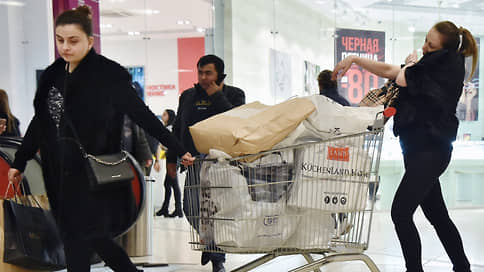Rosstat confirms recovery of household consumption to 2021 levels
[ad_1]

Rosstat statistics on household consumption confirms the rapid recovery of Russian household consumption to 2021 levels. The long-awaited adaptation of consumption has mainly affected the non-food sector – the pent-up demand for high-quality goods is met by what is on the market, albeit with worse and unusual characteristics. It is difficult to say yet how quickly the inflationary pressure caused by the change in consumer patterns will limit consumption, it will probably take several months.
The latest macroeconomic statistics from Rosstat allows us to ascertain the quantitative and qualitative positive shifts in household demand, which were previously recorded by indicators of consumer sentiment. “Consumer activity in April is growing both compared to last year and to the level of two years ago,” the Ministry of Economy notes, commenting on the statistics of April 2023. According to the calculations of the agency, the total turnover of retail trade, catering and paid services to the population in April was 7.4% higher than the level of April 2022 (after a decrease of 1.9% in March) and 0.1% higher than April 2021. Estimates of the dynamics of consumer spending in annual terms, made by Igor Polyakov from the Center for Macroeconomic Analysis and Short-Term Forecasting (CMASF), are similar, but less positive – they “almost returned to the level of 2021, they will probably go positive in May,” although Sberindex fixes some cooling of citizens’ spending on Sberbank cards in May.
At the same time, if the Ministry of Economy in April compared to March 2023, seasonally adjusted, reveals an acceleration of growth in both retail and services turnover, then the CMASF believes that the demand for services in April compared to March (seasonally adjusted ) dropped sharply (by 1.4%), and the main reason for the increase in consumer spending (by 0.5% per month) was the increased demand for non-food products (plus 1.9% in April). Mr. Polyakov explains this change in the population’s preferences by the growth of consumer confidence and the transition to purchases of expensive durable goods with relatively lower technological and quality characteristics, for which pent-up demand can be satisfied. Similar trends “in April-May” in the latest regional monitoring are also recorded by the Central Bank: “Recovery of consumer activity continued at a moderate pace. Increased attendance of shopping centers. Sales of non-food items recovered, including new and used cars. The demand of the population for catering services and domestic tourism continued to grow. Buyers still preferred goods and services in a more affordable price segment.”
Rosstat data on the consumption of goods in the first quarter in annual terms record noticeable changes in the qualitative preferences of consumers over the past year. In the food segment, attention is drawn to the growth in the consumption of fresh fruits and vegetables, the decrease in the consumption of canned food and vegetable oil, with stagnation in meat purchases and a decrease in fish purchases. “The standard of consumption is shifting towards the style and habits of the middle class,” says Mr. Polyakov. Fueling consumer confidence and growth in private demand is the continued accelerating increase in real wages (2.7% growth in March in annual terms, against 2% in February) against the backdrop of a labor shortage (in April, unemployment reached another historical low of 3.3% ) and lower inflation (to 2.3% in April from 3.5% in March). In addition, according to Raiffeisenbank economists, in April the influence of the credit and deposit channel on consumption almost ceased to be restraining, against the backdrop of accelerating growth in lending and declining growth in savings. “One of the limiting factors now is macroprudential restrictions – the Central Bank limits the issuance of borrowers with a high debt burden. In the third quarter, they will be tightened relative to the second quarter. At the same time, we note that the effect of these measures is more aimed at controlling the credit quality of the banks’ portfolio, and not at cooling down lending, and, in our opinion, should not be decisive in the dynamics of lending,” the bank’s analysts say. “Operational indicators indicate a consolidation of the trend towards a gradual decrease in savings sentiment at the beginning of the second quarter,” economists at the DIP Central Bank, in turn, note in their latest review “What the Trends Say About”.
Rising wages (the latter will continue to grow also because employment, according to the CMASF, is increasing not in sectors with a shortage of workers, but among the self-employed and entrepreneurs) and the demand of the population against the backdrop of restrictions on the supply side are accelerating inflation. Thus, the latest data, according to analysts, fixes an accelerated rise in prices for the least volatile part of consumer goods, and as of May 29, inflation year-on-year amounted to 2.41%. In this situation, an inflationary surge can be avoided either by tightening the monetary policy of the Central Bank, or by accelerating import substitution in the consumer sector, or by an equally accelerated growth in imports of goods, the demand for which has not yet been satisfied. Under the conditions of physical restrictions on the implementation of the latter (which most often happened in the Russian economy in response to the growth of consumer demand), the tightening of monetary policy is more likely.
[ad_2]
Source link






